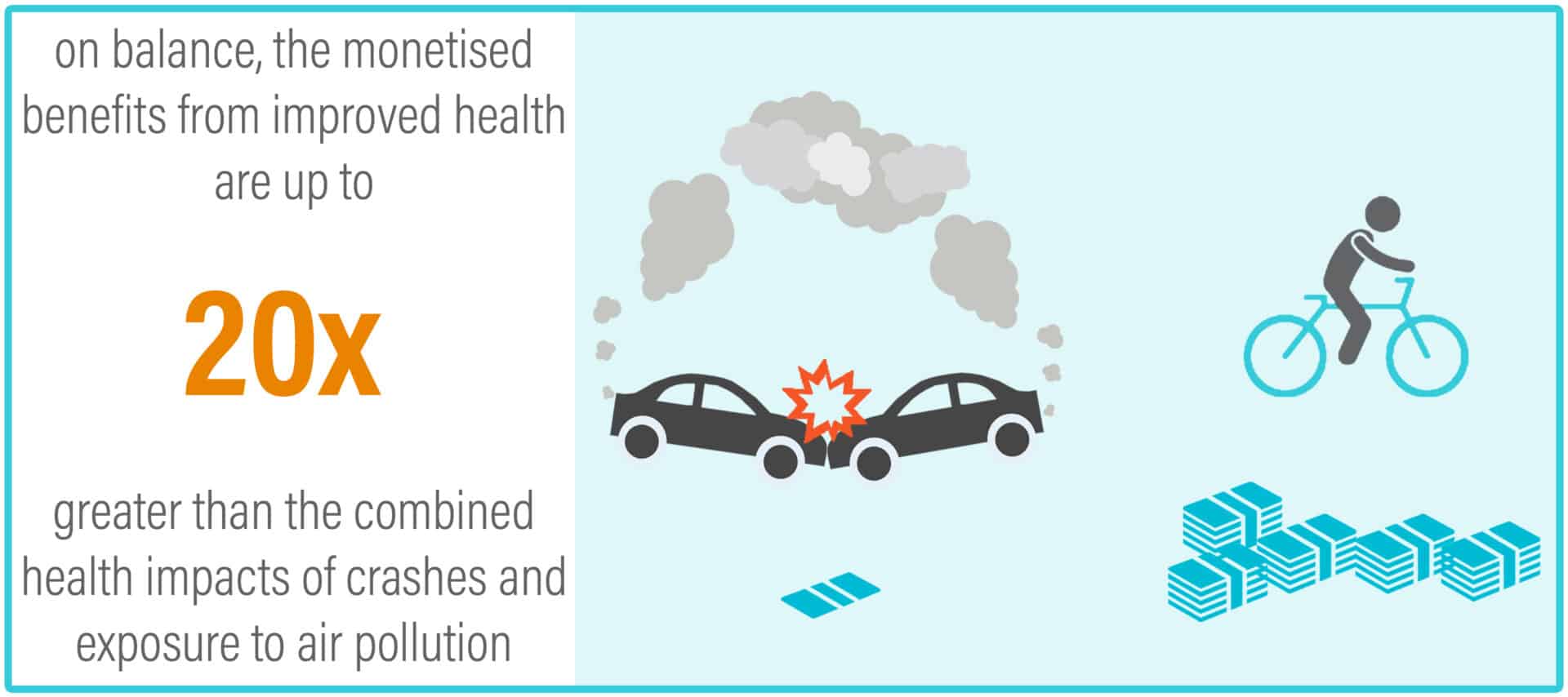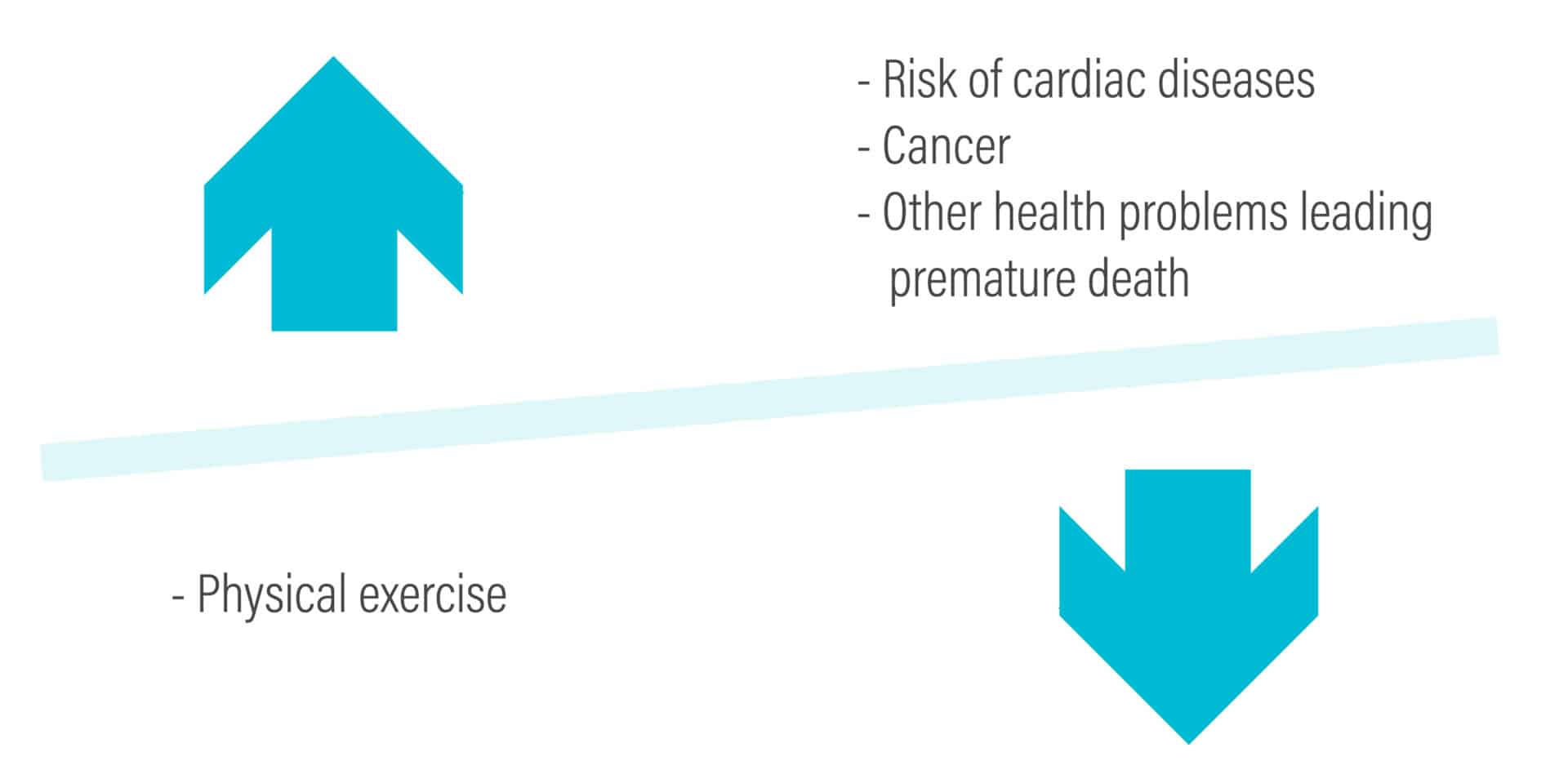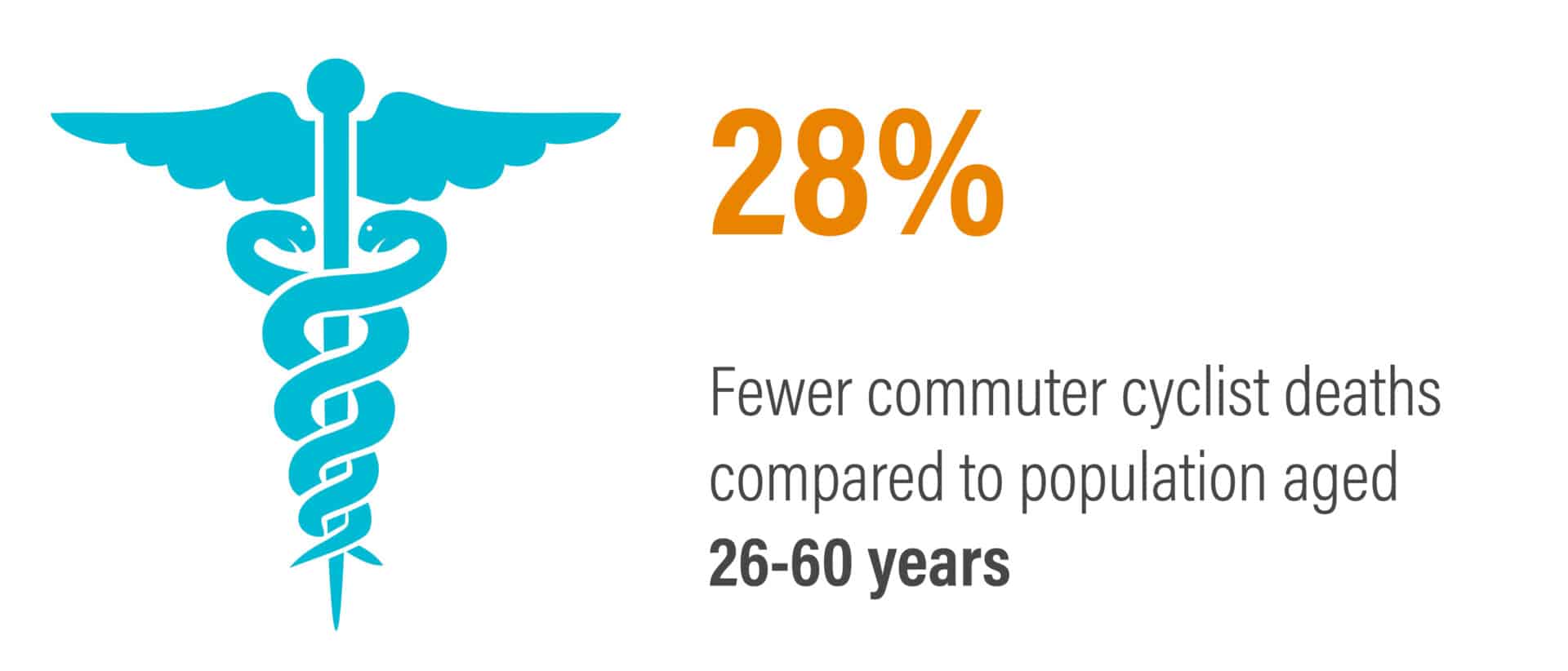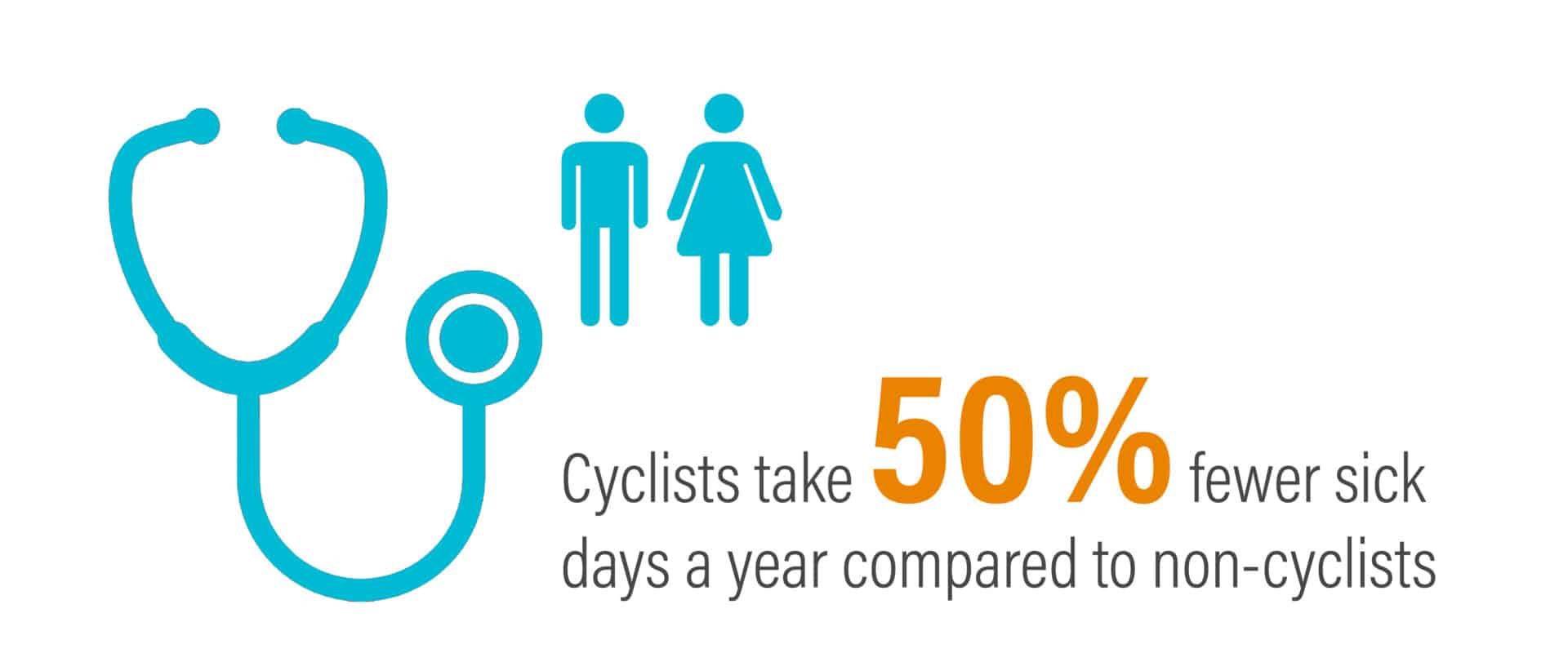Globally, around 23% of adults aged 18 and over were not active enough in 2010 (men 20% and women 27%). In high-income countries, 26% of men and 35% of women were insufficiently physically active, as compared to 12% of men and 24% of women in low-income countries. The drop in physical activity is partly due to inaction during leisure time and sedentary behaviour during the job and at home. Likewise, an increase in the use of “passive” modes of transportation also contributes to insufficient physical activity.
Cycling increases physical exercise and therefore reduces the risk of cardiac diseases, cancer, and other health problems that lead to premature death. For this reason, several institutions and organizations have developed strategies to promote physical activity and proposed policies to encourage cycling.
In Turkey, three people out of four have inadequate levels of physical activity.
In Mexico City, the reported prevalence of Type 2 diabetes is 13.9% for adults, and 74% are overweight or obese.



